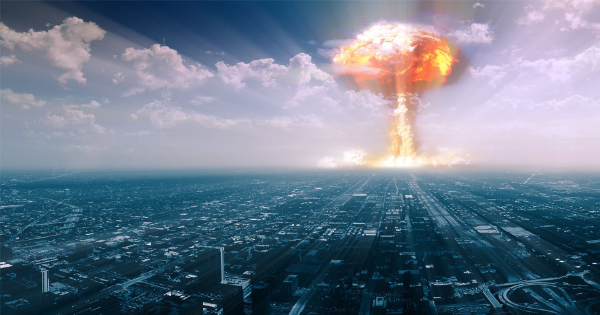If nuclear war breaks out, which U.S. cities would be targeted first?
04/10/2017 / By JD Heyes

Following the end of the Cold War, the world breathed a sigh of relief when the two superpowers – the United States and the Soviet Union – did not destroy each other with nuclear fire and much of the remaining planet with nuclear fallout.
And for the ensuing two decades, there hasn’t been much concern, generally speaking, about a nuclear World War III breaking out. There has been concern about so-called “rogue” regimes like North Korea and Iran developing nuclear bombs along with the capability of delivering them around the globe, but as for great power nuclear war, no one really gave that much thought.
Until recently.
Last week President Donald J. Trump engaged in his first major combat as commander-in-chief when he ordered the U.S. Navy – on the advice of his national security team – to launch a massive Tomahawk cruise missile strike against a Syrian government airbase believed to have been the launch site for the latest sarin gas attack against rebels and non-combatants.
The attack finally put to rest the Left-wing fake news narrative that Trump is nothing more than a lackey for Russian President Vladimir Putin, who was quite angry at the U.S. president for attacking his client state and key regional ally. In fact, in the days following the destruction of the Syrian airbase, Russia and Iran issued a joint statement asserting that “red lines” had been crossed and they would respond forcefully to any new attacks, no matter who launched them. (RELATED: Will Russia, Iran Double Down In Syria Following Trump’s Actions Against Assad, Leading To World War III?
Sponsored solution from the Health Ranger Store: The Big Berkey water filter removes almost 100% of all contaminants using only the power of gravity (no electricity needed, works completely off-grid). Widely consider the ultimate "survival" water filter, the Big Berkey is made of stainless steel and has been laboratory verified for high-efficiency removal of heavy metals by CWC Labs, with tests personally conducted by Mike Adams. Explore more here.
That got us to thinking: Would Russia launch World War III over Syria? Quite possibly, given its strategic and financial interests there.
So that leaves the next question: What U.S. targets and cities would Russia most likely attack? That would depend largely on the strategic outcome Moscow sought.
For example, if Putin decided to first hurt the U.S. militarily and limit our ability to counterstrike, the most likely targets would be our largest military bases and nuclear mission facilities. Nuclear mission facilities would include ground-based missile silos, nuclear-armed submarines and bases with nuclear-capable bombers like Whiteman Air Force Base in mid-Missouri, home to all of the B-2 stealth bombers.
But Putin could also decide that it would be better to hit major American cities instead, including – in no particular order:
– Washington, D.C.
– New York City
– Chicago
– Los Angeles
– Dallas/Fort Worth
– Miami
– Seattle
– Houston
– Denver
– Philadelphia
– San Francisco
– Phoenix
– Tampa
– St. Louis
– Minneapolis
– Boston
– Atlanta
This would be devastating, both in terms of casualties and long-term economics. According to the U.S. Census Bureau, though major American cities comprise less than 4 percent of the country’s land mass, they are home to nearly two-in-three Americans (62.7 percent, according to March 2015 figures). Of those, the congested East Coast would make a far more tempting target, given that “cities with the largest land areas are mostly in the West and have fewer people per square mile,” the Census Bureau said, adding that “population density in cities is 46 times higher than the territory outside cities.” (RELATED: North Korea Ready To Nuke America … “World Should Be Ready” Warns High-Level Defector Who Confirms Nuke Launch Plans With NBC News)
Very tempting targets, indeed, then.
But then striking American cities would have a multiplying effect. For cities that were spared, residents would no doubt panic, leading to widespread chaos and even more death and destruction. Smaller cities of 1 million, 500,000, even 100,000 people would quickly degenerate into mayhem as the national government fought mostly to save itself – though a strike on Washington, D.C., would most assuredly take out the bulk of the federal government.
Even a single nuclear strike could cause widespread pandemonium in American cities that were not targeted.
In addition to traditional military targets, which would no doubt be part of Russia’s nuclear strike plan, the largest American cities will certainly be on the list as well.
It’s all food for thought as the world once more appears on the brink of widespread death and destruction. Follow more news about nuclear radiation fallout, terrorism and war at Radiation.news.
J.D. Heyes is a senior writer for NaturalNews.com and NewsTarget.com, as well as editor of The National Sentinel.
Sources:
Tagged Under: nuclear war, targets, U.S. cities, World War III




















